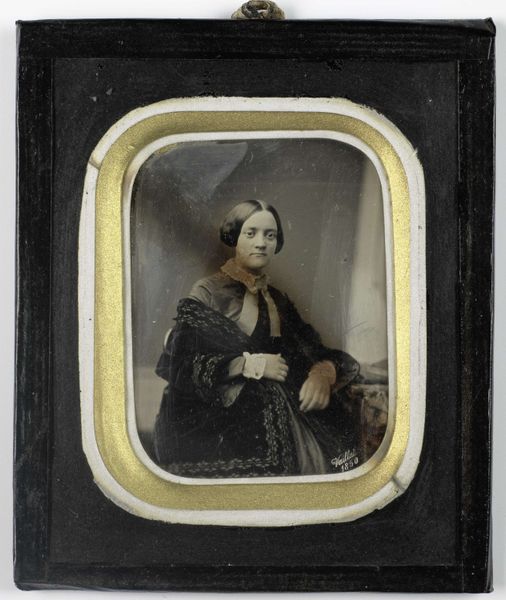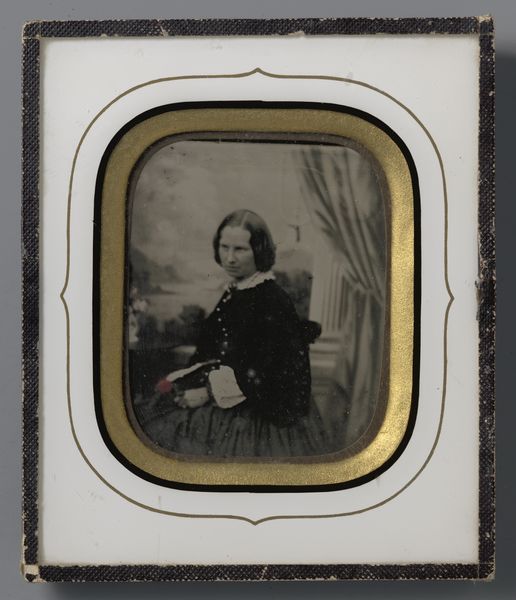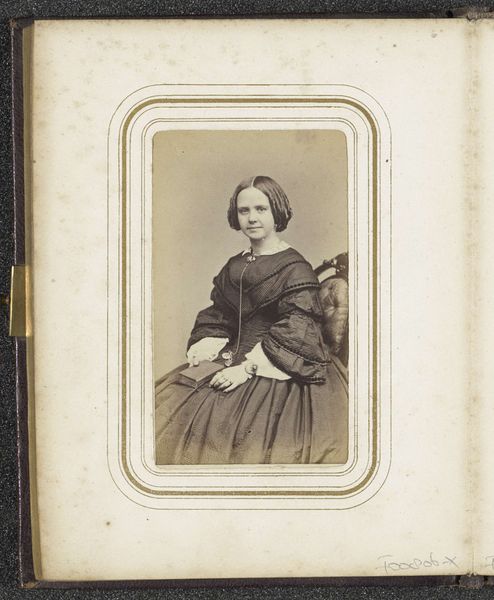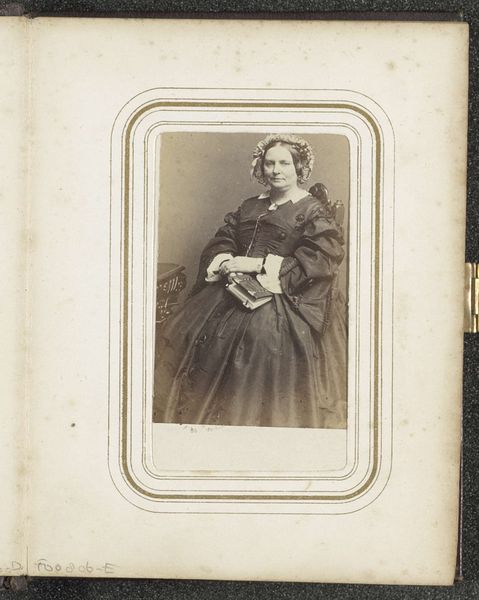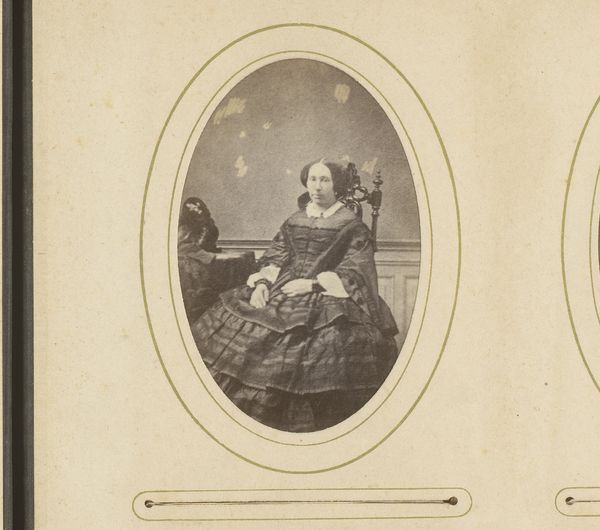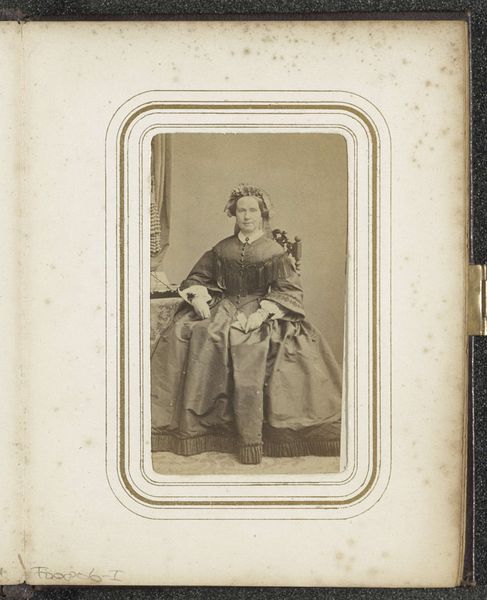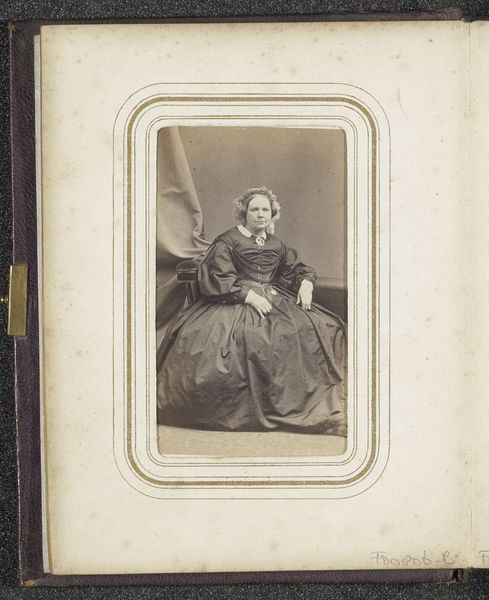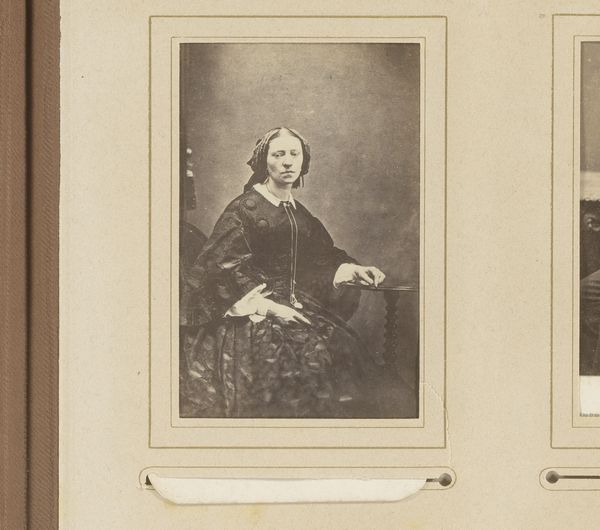
daguerreotype, photography
#
portrait
#
book
#
sculpture
#
daguerreotype
#
photography
#
oil painting
#
realism
Dimensions: height 96 mm, width 70 mm, height 118 mm, width 93 mm, thickness 10 mm
Copyright: Rijks Museum: Open Domain
Editor: This is an early photograph, a daguerreotype to be exact, entitled *Portret van een onbekende vrouw met boek*, dating from the mid-19th century and attributed to Edwin Fehrenbach. It’s incredibly detailed, and she appears to be contemplative. I am particularly struck by the contrast between her somewhat severe dress and the ornate details like the gold bracelet. What meaning do you see in this image? Curator: The book itself is laden with symbolism, particularly in this era. More than just a signifier of literacy, which was certainly becoming more accessible to women of this social class, the book also suggests a private world, intellectual pursuits, and quiet authority. The gold bracelet is particularly poignant. Editor: Can you expand on that? Curator: Consider how jewellery in portraits operates. While it reflects prosperity, it can also signify identity, allegiance, or remembrance. How might the pairing of the book and bracelet suggest something particular about this woman’s inner and outer life? What do you observe about the placement of her hand and gaze? Editor: She’s resting her head on her hand, as if in deep thought. She appears engaged but calm, maybe even a bit world-weary? Curator: Precisely. Notice the faint column in the background—another loaded symbol often included in portraits to subtly imply steadfastness, and connection to history and ideals of Western civilization. The photograph, then, is building a particular visual narrative of a woman deeply engaged with learning and the world around her, though she is, in some ways, obscured to us. Editor: That’s a powerful layering of symbols to express identity. I didn't recognize all of them at first. Thanks! Curator: Indeed. Early photography often holds such complexity just below the surface. It's exciting when you start digging.
Comments
No comments
Be the first to comment and join the conversation on the ultimate creative platform.
